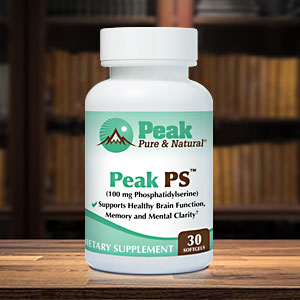Get Easy Health Digest™ in your inbox and don’t miss a thing when you subscribe today. Plus, get the free bonus report, Mother Nature’s Tips, Tricks and Remedies for Cholesterol, Blood Pressure & Blood Sugar as my way of saying welcome to the community!
Fast action after these heart attack symptoms can save your life

In the U.S. a heart attack happens approximately every 40 seconds. But you don’t have to be a statistic if you pay attention to your body and act on the heart attack symptoms it gives you.
If you delay, it can mean the difference between life and death.
In fact, the longer you wait to get treatment after heart attack symptoms start, the more damage can occur to the heart muscle — according to research published in Circulation: Cardiovascular Interventions.
The most common heart attack is caused by a complete coronary artery blockage called ST-elevation myocardial infarction (STEMI). STEMI patients are most often treated with PCI, which is a stent inserted into the narrowed heart artery that remains open. This procedure involves an inflated balloon which clears the obstruction and restores blood flow — ultimately saving lives.
Researchers sought to learn more about how time can affect the procedure’s success, and here’s what they found…
Timing is everything when it comes to heart attack
How well a patient does after their heart attack has all to do with two critical factors that both have to do with time: the first is before the patient arrives to the hospital after symptoms start (symptom-to-balloon time), and secondly, the time from hospital arrival to PCI (door to balloon time).
The study author, Gregg W. Stone, M.D., director of academic affairs at Mount Sinai Heart Health System in New York City stated, “We focused on heart attack size, or damage, with both time measures and found symptom-to-balloon time was by far the most important.”
This finding emphasizes the importance of early detection and taking quick action. Stone and colleagues discovered this by analyzing the data from 10 randomized controlled trials from 2002-2011, which followed more than 3,100 STEMI patients enrolled after PCI.
After PCI, the patients’ hearts were assessed within 3-12 days to measure the size of the heart attack. Some studies including additional measures such as TIMI flow (measuring coronary artery blood flow), and ejection fraction (measuring a percentage of blood the heart can pump with each contraction). All patients were followed up for a minimum of 6 months with a median follow-up of 341 days after PCI.
Heart Saving Clinical Findings
- Symptom-to-balloon time was more strongly associated with heart attack size and patients’ clinical health after a heart attack than door-to-balloon time.
- The median symptom-to-balloon time was 185 minutes. The median door-to-balloon time was 46 minutes.
- Symptom-to-balloon time represented approximately 80 percent of the total time from symptom onset to treatment of the artery.
- The size of the heart attack increased with longer symptom-to-balloon times, whereas longer door-to-balloon times were not notably related to heart attack size.
- Older age, female sex, arterial hypertension, diabetes and left circumflex artery as the culprit vessel, were associated with longer symptom-to-balloon time.
- For every 60-minute delay in symptom-to-balloon time, the one-year rate of death or hospitalization for heart failure was increased by 11 percent. In contrast, there was no relationship between delays in door-to-balloon time and these clinical results.
These clinical findings suggest the focus should be to shorten the delays from symptom onset to arrival at hospitals that can perform PCI.
Don’t wait to check out heart attack symptoms
During the peak of the COVID-19 pandemic, hospitals nationwide reported people were delaying or avoiding critical care and were not coming in for heart attack and stroke symptoms. These new findings emphasize the importance of calling 911 at the first sign of a heart attack or stroke. Getting quick treatment can save a life.
Don’t wait! Call 911 if you experience the following:
- Breaking out in a cold sweat, nausea or lightheadedness
- Shortness of breath with or without chest discomfort
- Pain or discomfort in one or both arms, back, neck, jaw, or stomach
- Chest discomfort (a few minutes or longer, or fullness and/or pain)
Editor’s note: There are perfectly safe and natural ways to decrease your risk of blood clots including the 25-cent vitamin, the nutrient that acts as a natural blood thinner and the powerful herb that helps clear plaque. To discover these and other secrets of long-lived hearts, click here for Hushed Up Natural Heart Cures and Common Misconceptions of Popular Heart Treatments!
Sources:
Acting quickly after heart attack symptoms start can be a heart saver – EurekAlert!
Warning signs of a heart attack – Heart.org














